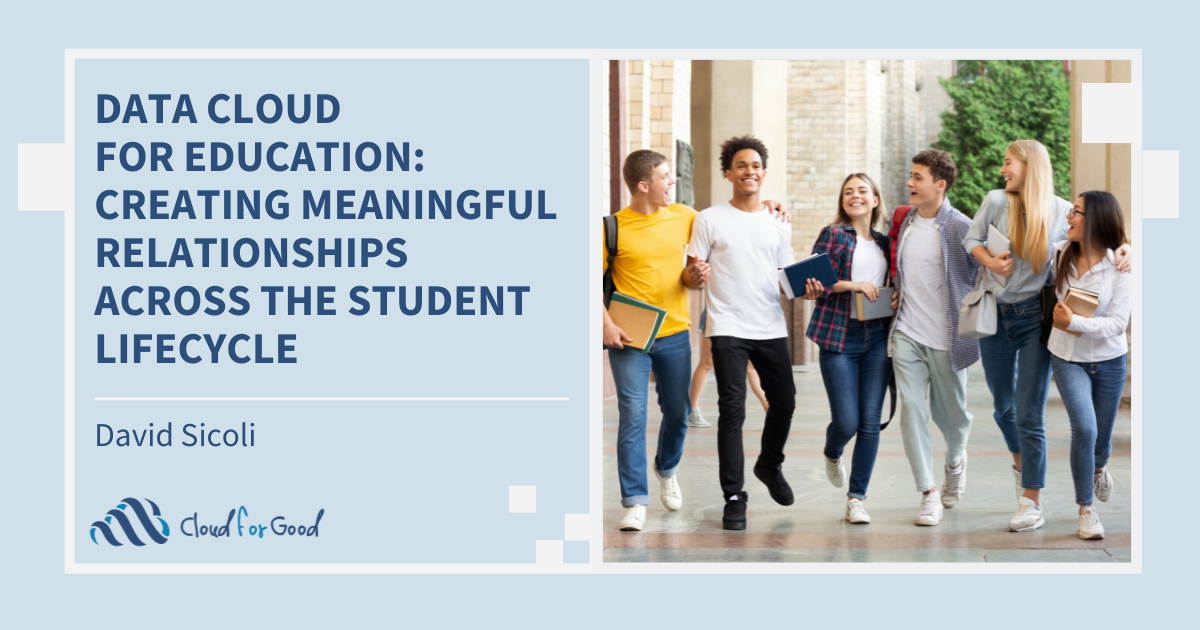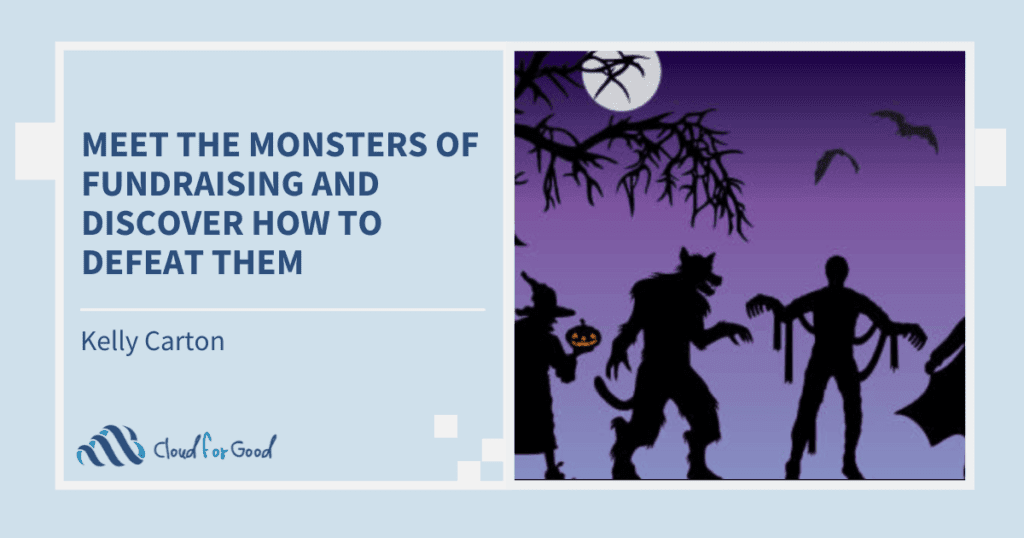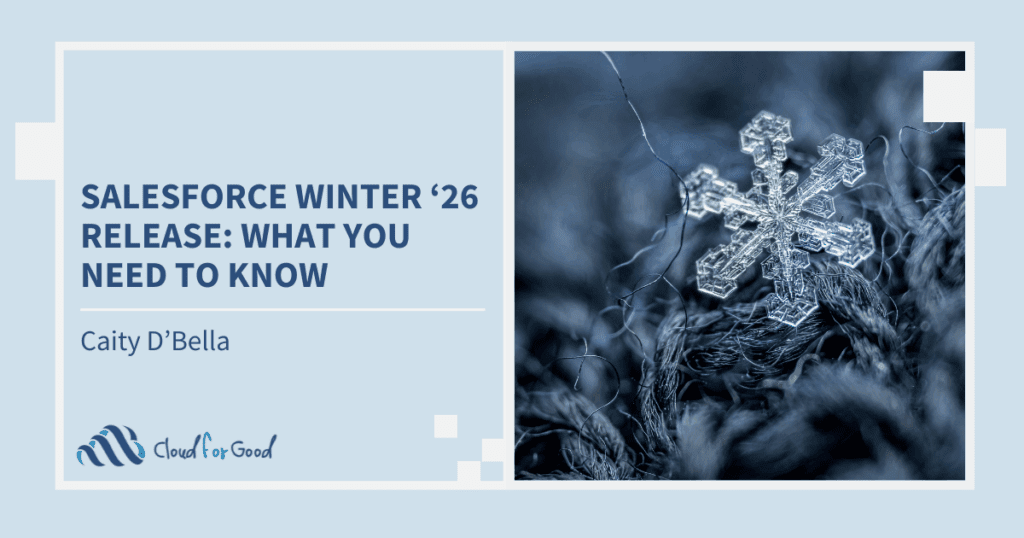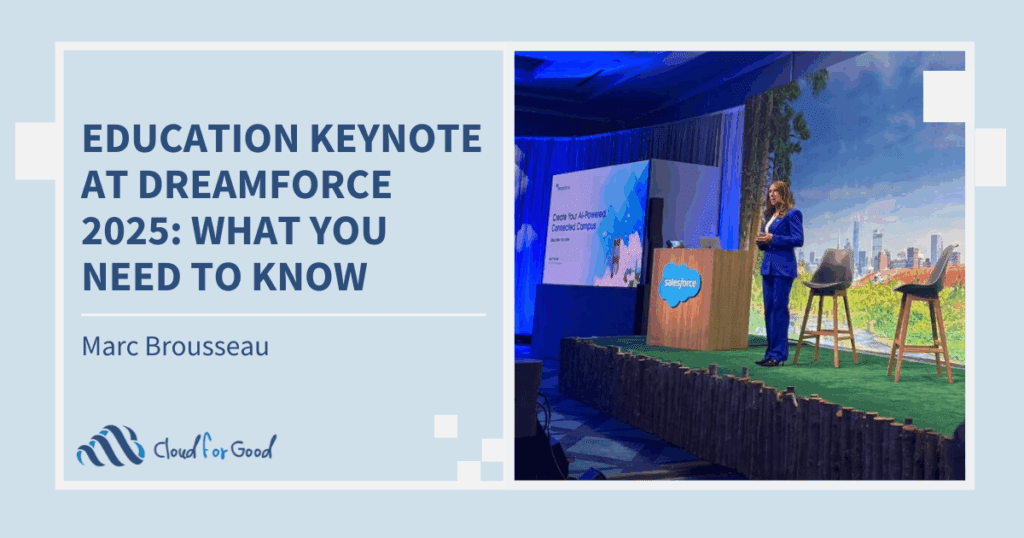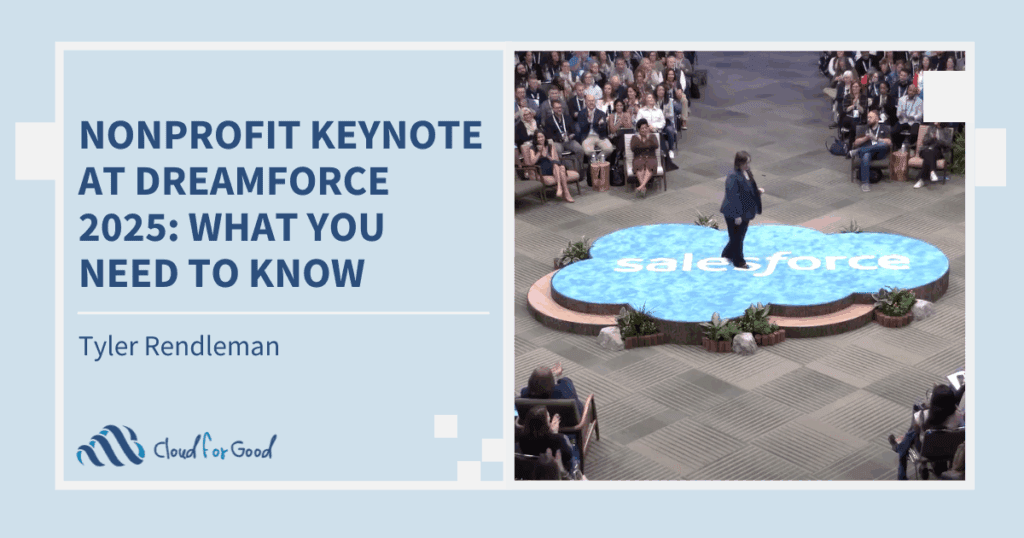Nowadays, data is perceived as a source of control or power—that is, data plays a vital role in guiding and informing teams. We also know that data is so critical to knowing who your constituents are and building truly meaningful relationships. Institutions collect huge amounts of data— not just on active students but also on prospective students, alumni, and other relevant constituents affiliated with their institution—giving them ample fuel to create custom journeys throughout their lifecycle with your institution. That data collection can begin as early as high school when a prospective student is learning about the institution and its degree programs, and may even continue for years after a student becomes an alumnus.
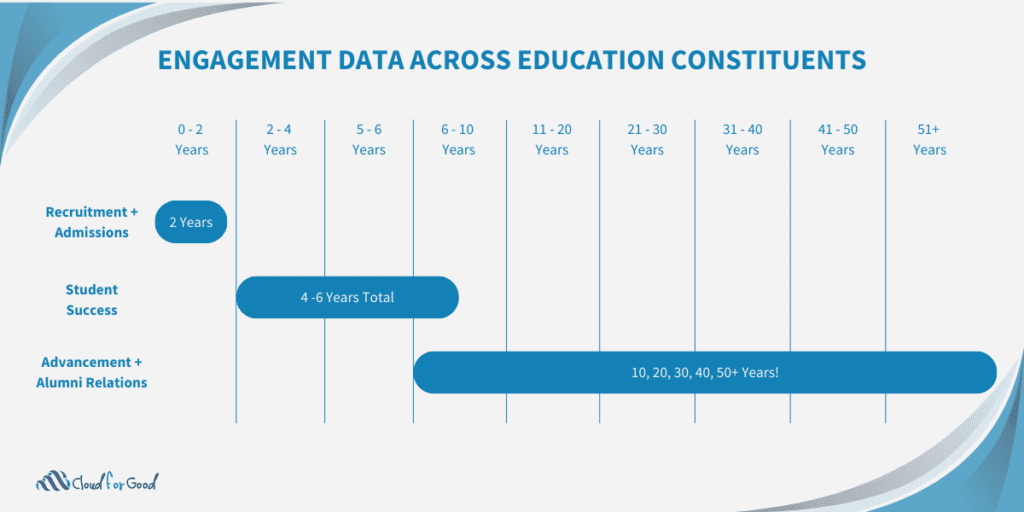
However, one of the most common topics—and pain points—that we’ve heard from fellow industry peers and clients is around data and data siloes. These data siloes are often the result of insufficient technology infrastructure that limits the flow of data between different systems. In higher education, the existence of data silos can contribute to a sense of isolation on campus that can eventually hinder the ability to take action on that data, such as developing a significant relationship with a constituent. They might even risk losing relationships without a central data governance or integration strategy.
Fortunately, many innovative and modern technology solutions for the education industry are available today that higher education institutions can utilize to unify, unlock, and bring meaning to their data and take action on it—notably, Data Cloud for Higher Education.
Data Cloud for Education: How It Works
Offered through Salesforce Education Cloud, Data Cloud for Higher Education takes data and information from different point solutions or departmental databases, follows configurable rules to unify records across the siloes, then makes that data discoverable in Education Cloud itself. This creates a holistic view into who a constituent is and what they’ve been doing with the organization. Data generated within Education Cloud that can to be shared back to the Data Cloud side, further enriching the overall data set.
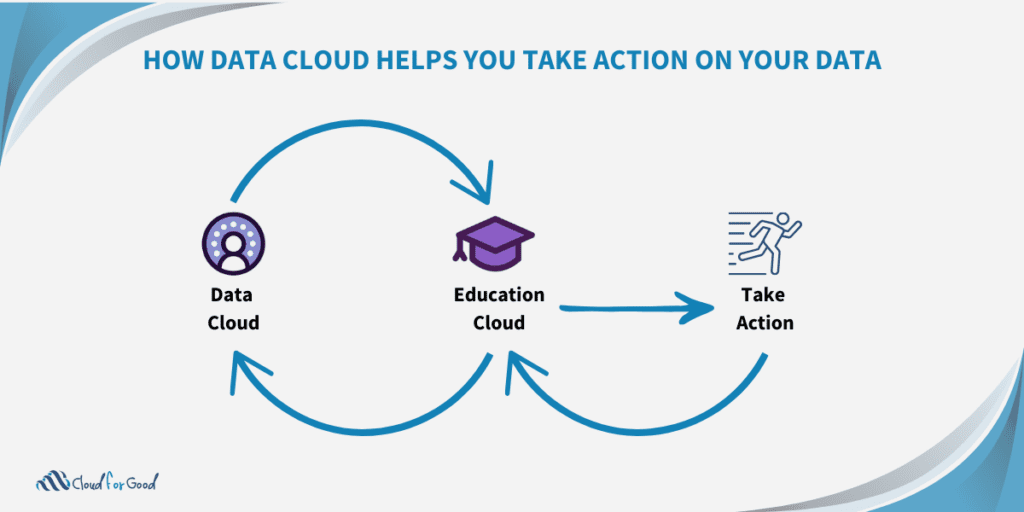
As this activity is happening through Data Cloud, data becomes available for users to gain valuable meaning and insights about and consequently take action.
Through Data Cloud, higher education institutions can get to the heart and soul of their data by bringing together these different data spaces, visualizing, and taking action on that data within Education Cloud itself.
Benefits of Data Cloud for Education
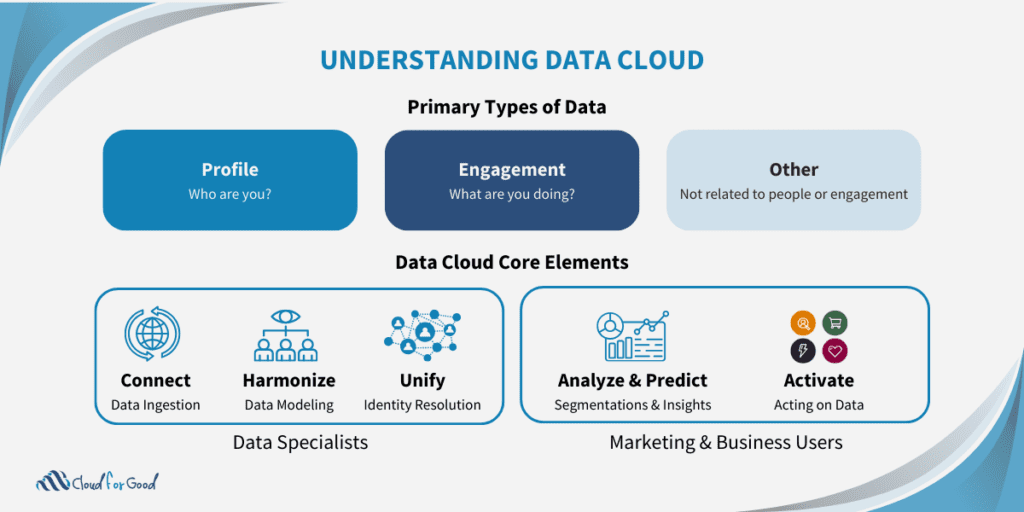
Salesforce’s Trusted Artificial Intelligence (AI) Architecture
Data Cloud is critical to grounding AI models. AI, whether generative AI like Salesforce’s Agentforce Agents or predictive AI like Einstein Discovery, can be beneficial for higher education institutions, but they need data to work. AI tools won’t be as robust or valuable without data, which means institutions will need to bring disparate data into one place and in order to act on it. Data Cloud helps build a solid data foundation and a single source of truth, such as unified student or alumni profiles, for AI to work with. In addition, higher education institution users can tap into Data Cloud’s open model ecosystem strategy for secure access to foundational AI models hosted outside of Salesforce through its APIs, such as OpenAI or Anthropic. They also have the flexibility to bring in their own LLMs and data lakes to reuse any existing generative AI investments and then run those AI models on their infrastructure.
Data Model Objects (DMOs) for Engagement Visualization and Details
In Data Cloud, users work with out-of-the-box data model objects (DMOs), which are the objects that store record-level information related to the individual or organization a user is interested in unifying across systems. Salesforce provides out-of-the-box DMOs that mirror Education Cloud to act as a starting point for mapping data. Once the data lands in Data Cloud, users can then use it for Calculated Insights or bring it into their analytical tools like Tableau and CRM Analytics. This can consequently provide activity and engagement metrics for learners and other constituents.
Vision for Student Success
The vision of student success is to provide holistic advising to students, support them, and help them become ready for the future. To achieve this vision, you need to be able to help students across different dimensions like academics, career, well-being, or extracurricular involvement. To support students holistically, advisors need data spread across multiple, diverse systems—be it an LMS, student affairs systems, student information systems (SIS), etc.—that capture information on what is known as a student’s “digital body language.” On average, there are around 35 different systems that a university or college uses on campus. Data Cloud helps unify these systems and build holistic, comprehensive profiles for students that show data about their academics, career or program interests, activities and interactions outside the classroom, and more. Advisors can then use that data and act on it in the form of providing support based on that data for areas that a student needs to succeed in the classroom, on campus, and beyond.
Turning the Vision into Reality
Islands are great for taking vacations but not for trapping your university’s or college’s data in. But by investing in and leveraging Data Cloud, higher education institutions can take their trapped data across campus systems, bring them together in a single location, make meaning of their data, and act on it to create meaningful relationships across the student lifecycle, support institutional goals, and student journeys. However, to maximize your institution’s use of Data Cloud, you need a Salesforce partner who understands its value and power. Our work at Cloud for Good includes helping institutions think through their business processes and then take a strategic approach to integrating their existing data. So, when you’re ready to take your data goals to the next level, set up a consultation with Cloud for Good.

